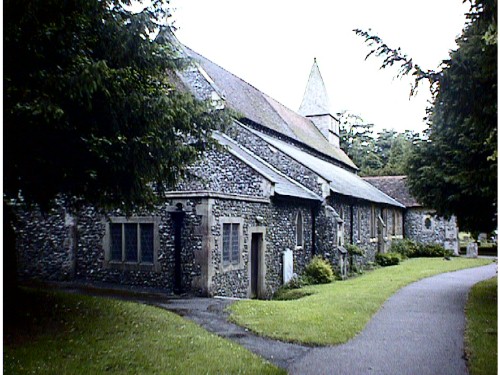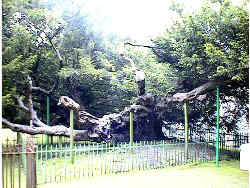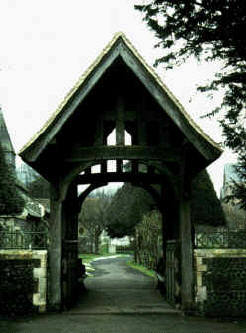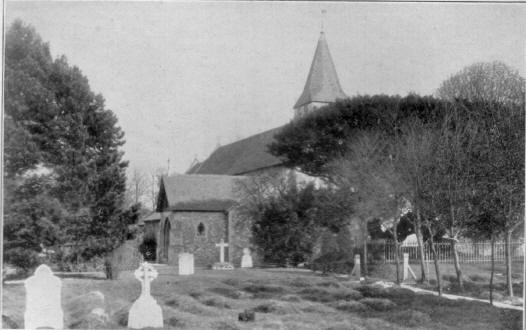| Index |
St Andrew's Church Buckland |
|
|
|
|
|
|
Tucked in behind the site of Buckland Paper Mill stands St. Andrew's Church. Buckland Church is the only existing parish church in Dover mentioned in the Domesday Survey, and may be presumed to have existed in the Saxon period. The present church has no trace of Saxon work in any part of it but, before 1066 it belonged to the Canons of St Martin's. The entry in the Domesday Book reads:
It is clear that a church has stood on this site since Saxon times, but the early building may have been a simple timber structure or built of chalk and flint dug out of the adjoining hillside. The population of Buckland at the end of Saxon rule was "twenty families, bond and free". The Buckland Yew is believed to be well over 1000 years old. in about 1841, "Old Humphrey" visited the church and included this description of the tree in a pamphlet published by the Religious Tract Society: "... the old yew in the churchyard is a curiosity. I wandered amongst the tombs, and mused over such of the green hillocks as had no stone to tell the names of those who slept beneath them; but the old yew tree, after all, was the greatest object of interest. Many an age must that old tree have stood sentinel amongst the graves; sometimes enriched with berries, and always adorned with leaves. At least, I should say, that 500 summer suns and winter snows have passed over it. Grey-haired and bald-headed men, on the Sabbath, have stood beneath it, in the time of barley harvest, before they entered the House of God. Old women, too, have assembled there in their russet gowns, and light-hearted children on a week-day, have indulged there in pastimes. The tree is hollow, and time and the elements have writhed it into fantastic shapes. I can see, or fancy I see, snakes and dragons in the twisted branches." (J.B.J. 1907) The plea to "Spare that tree" prevailed with the church
restorers in 1880 and the tree was moved 60 feet to the west to make way
for the doubling in length of the church. |
||
|
|
|
|
|
||
"Buckland Churchyard has, for many years past, ceased to be a burial place. The old churchyard is kept up in a way that does credit to the Vicar, the Rev. Turbeville Evans, and the Churchwardens, Mr. W. G. Lewis and Mr. C. J. Sellens. It is approached through a very handsome covered lych-gate, in which there are seats. On the well-kept greensward there are several very old headstones, which have resisted the effects of weather remarkable. One is in memory of Mary Gurner, who died in September, 1635; another to James Wood, who died 1692; and another to Ann, the wife of William Wood, who died June, 1733. On the higher ground, on the south side, under the spreading chestnut tree, is a headstone in the memory of Mrs. Jane Wilson, who died at Buckland, 12th August, 1849, aged 92 years. It was stated in the newspapers, at the time of her death, that she was a native of Canterbury, but had been resident for many years at Buckland. She had paid three different clergymen to bury her. To one she gave, in addition, all her plate. Two of them left Dover previous to her death. She had paid the undertaker for her funeral three years before she died. Adjoining the old churchyard, westward, and on the higher ground to the south, is Buckland Cemetery." (J.B.J. 1907)
In 1839, Sir Stephen R. Glynne, Bart., described the building thus:
On 8th May 1774, the spire was struck by lightning. Bavington Jones described the church in 1907, after the extension:
|
||



